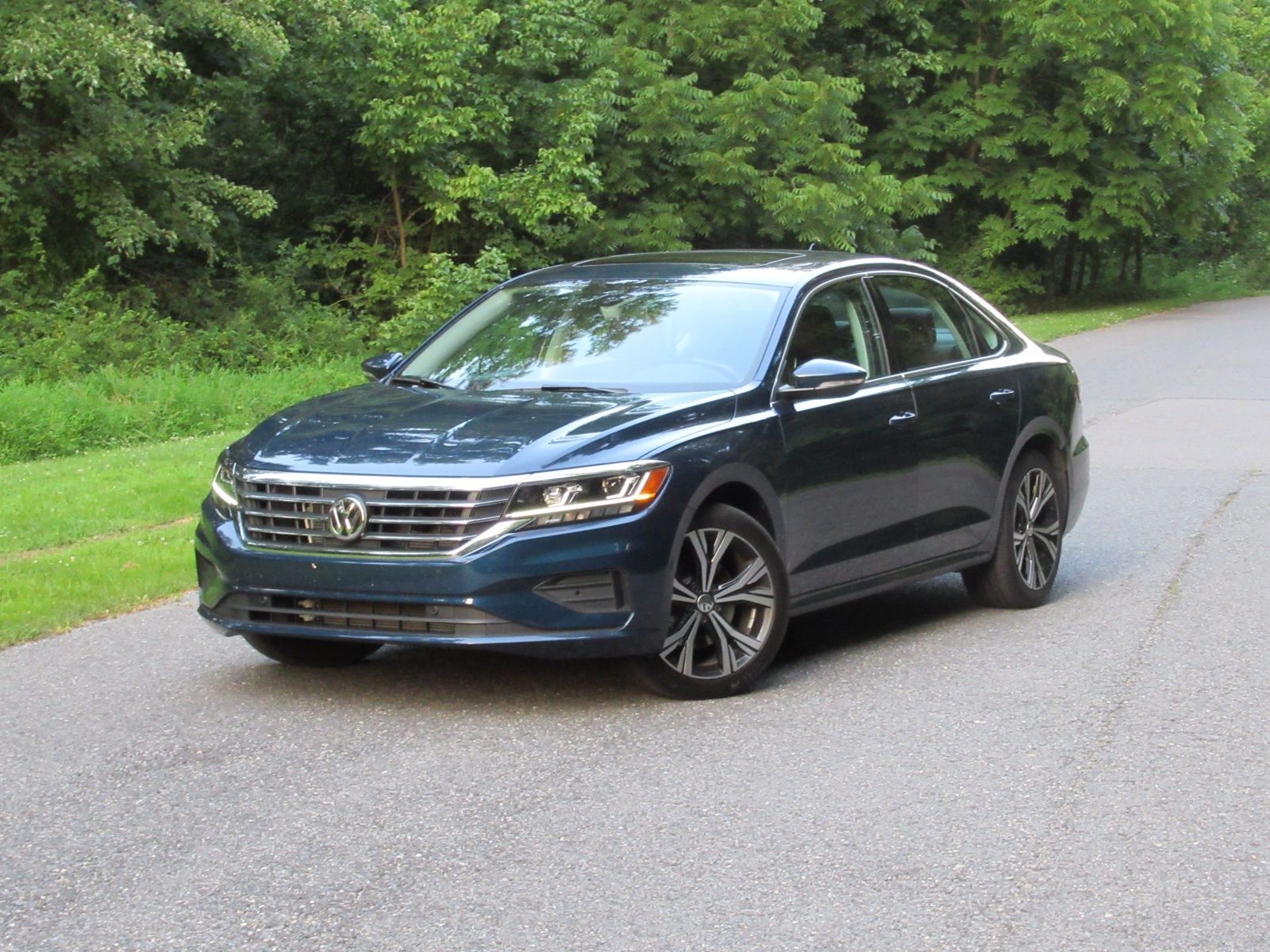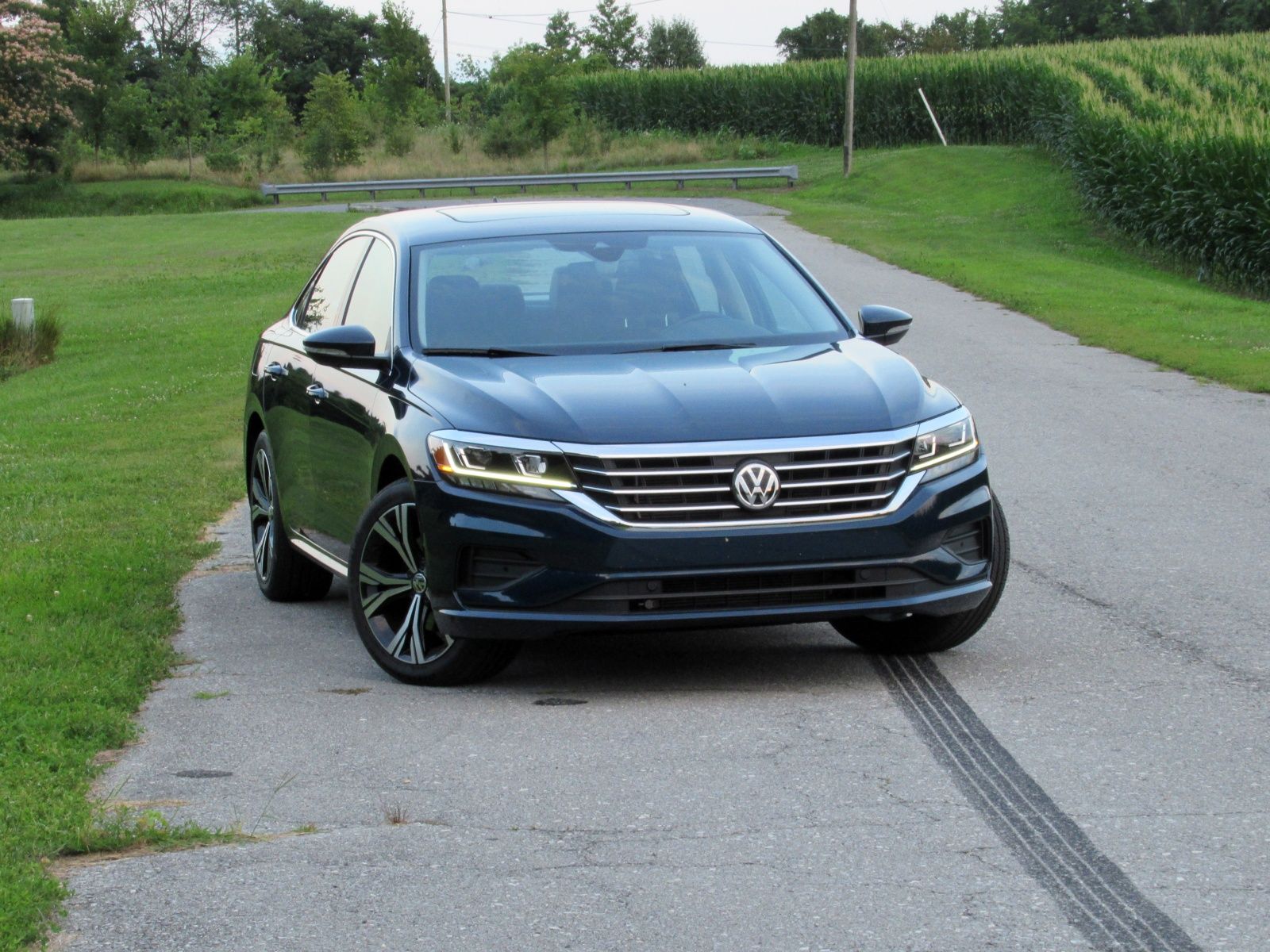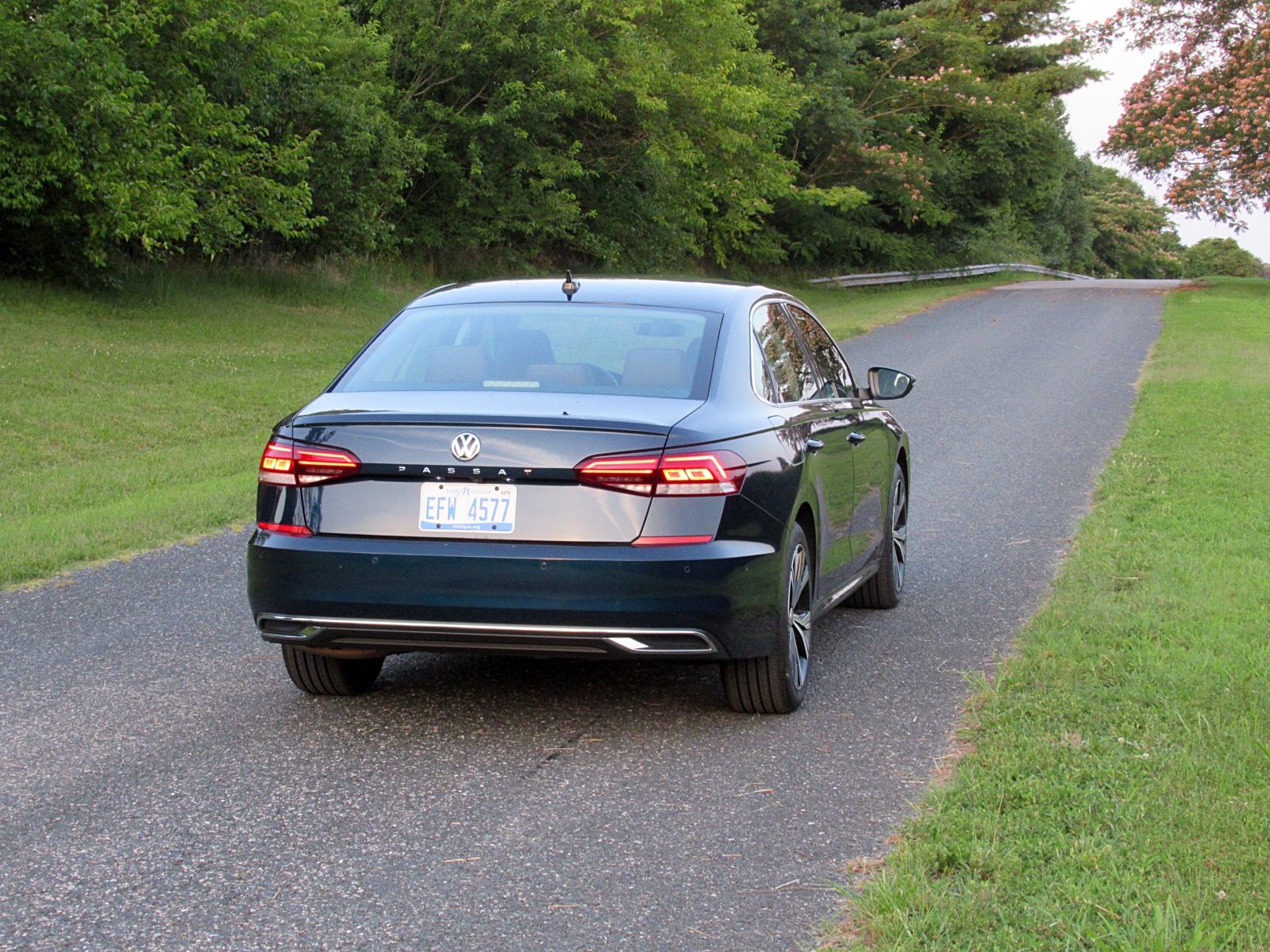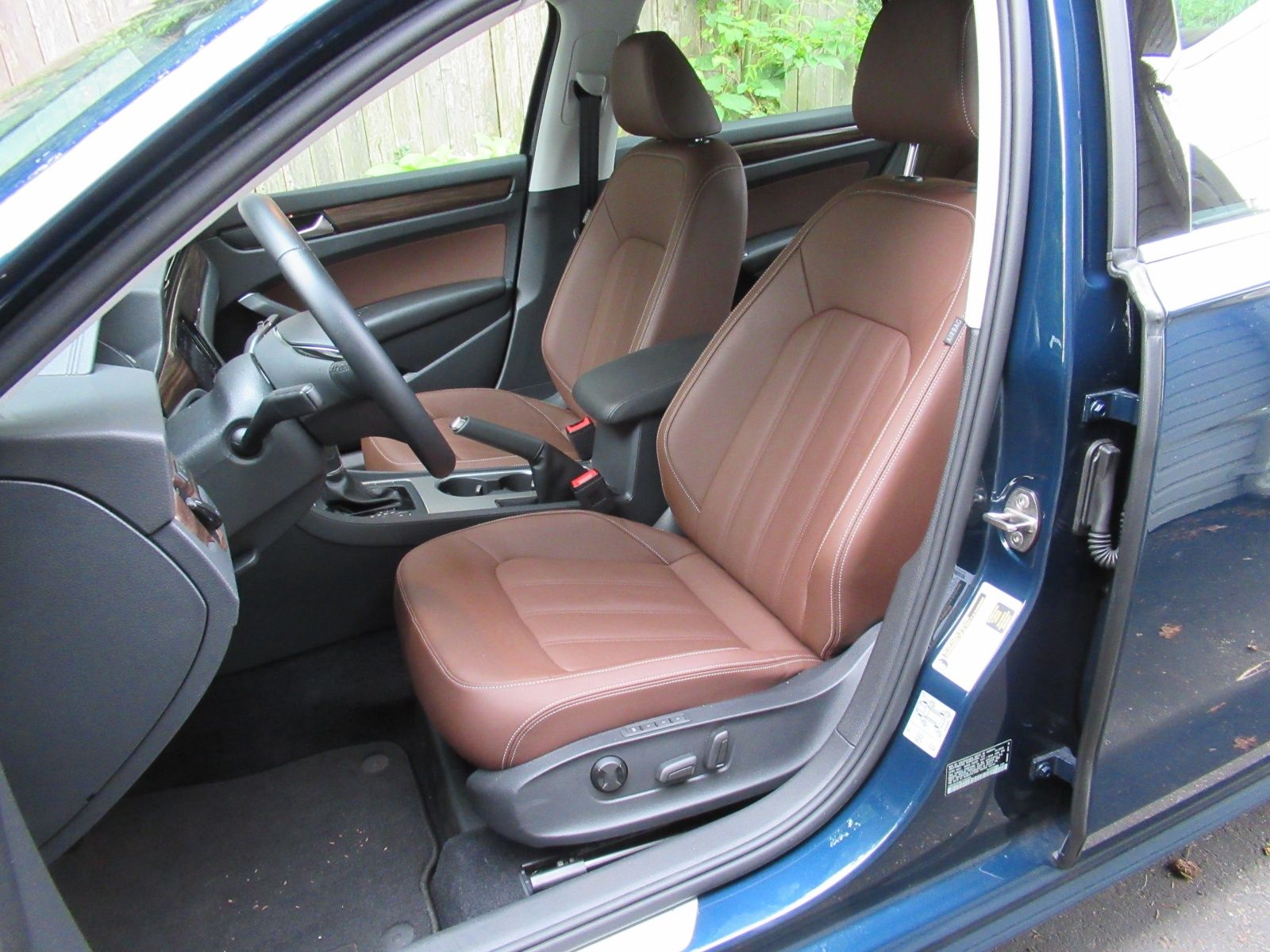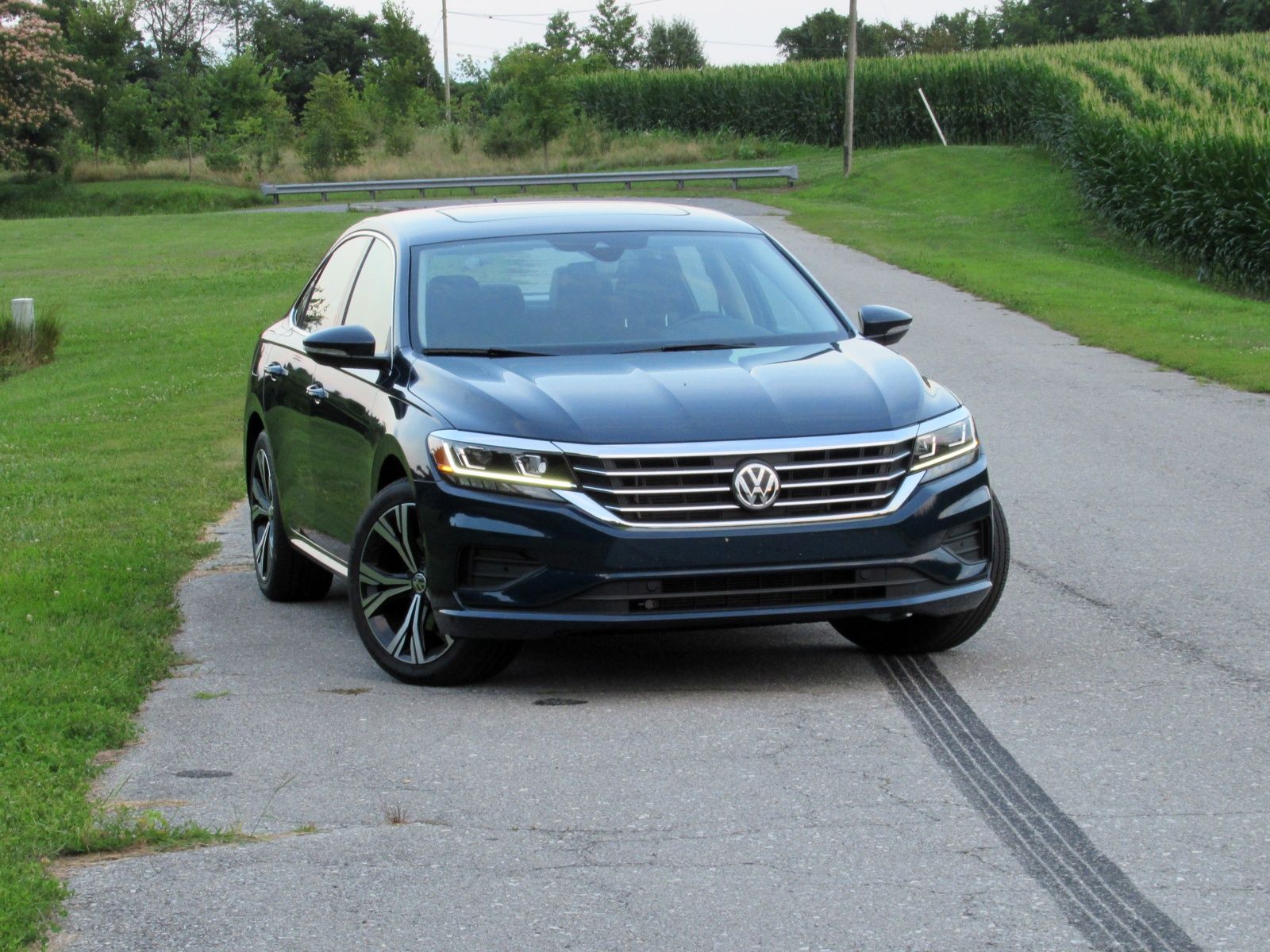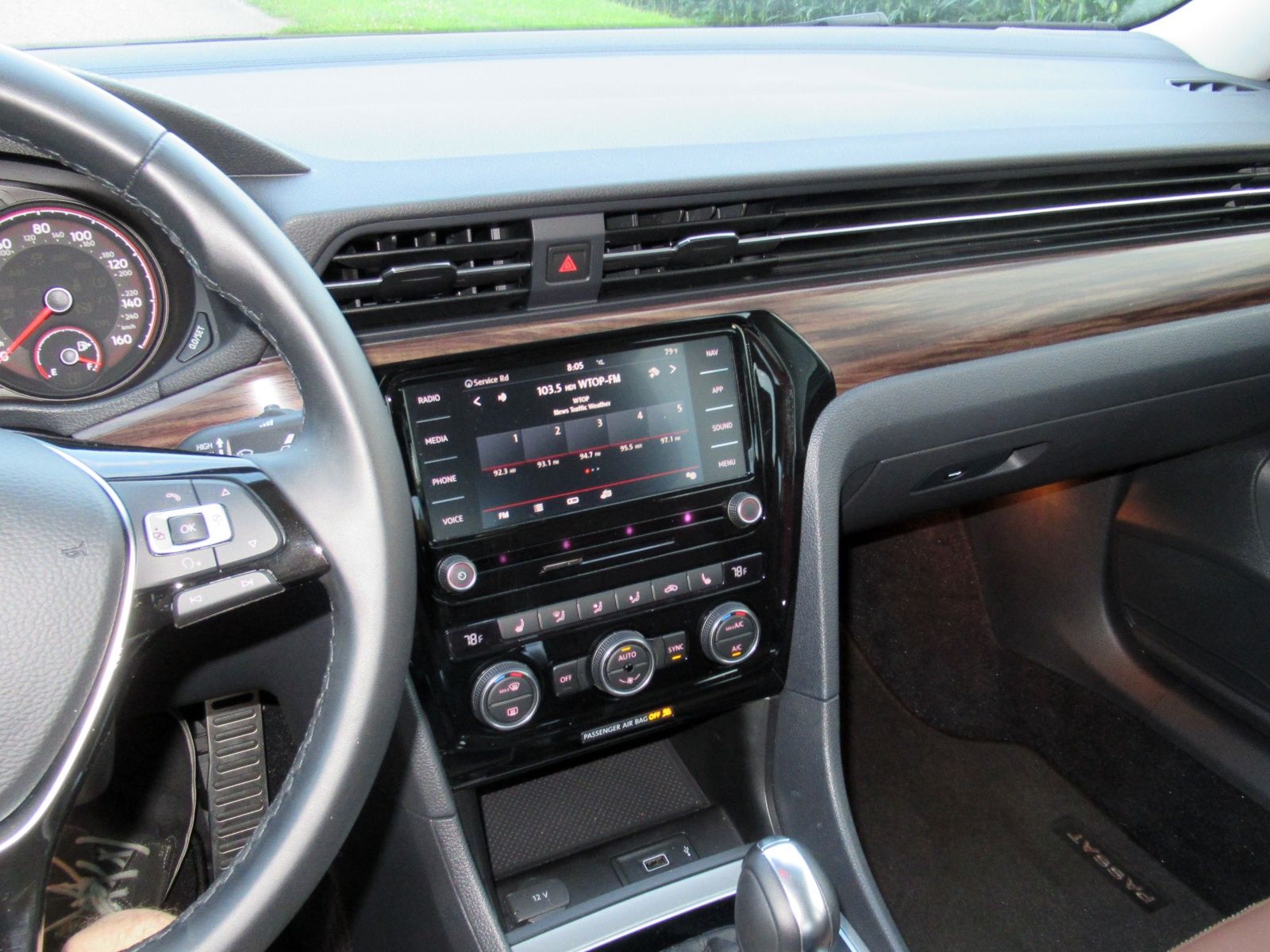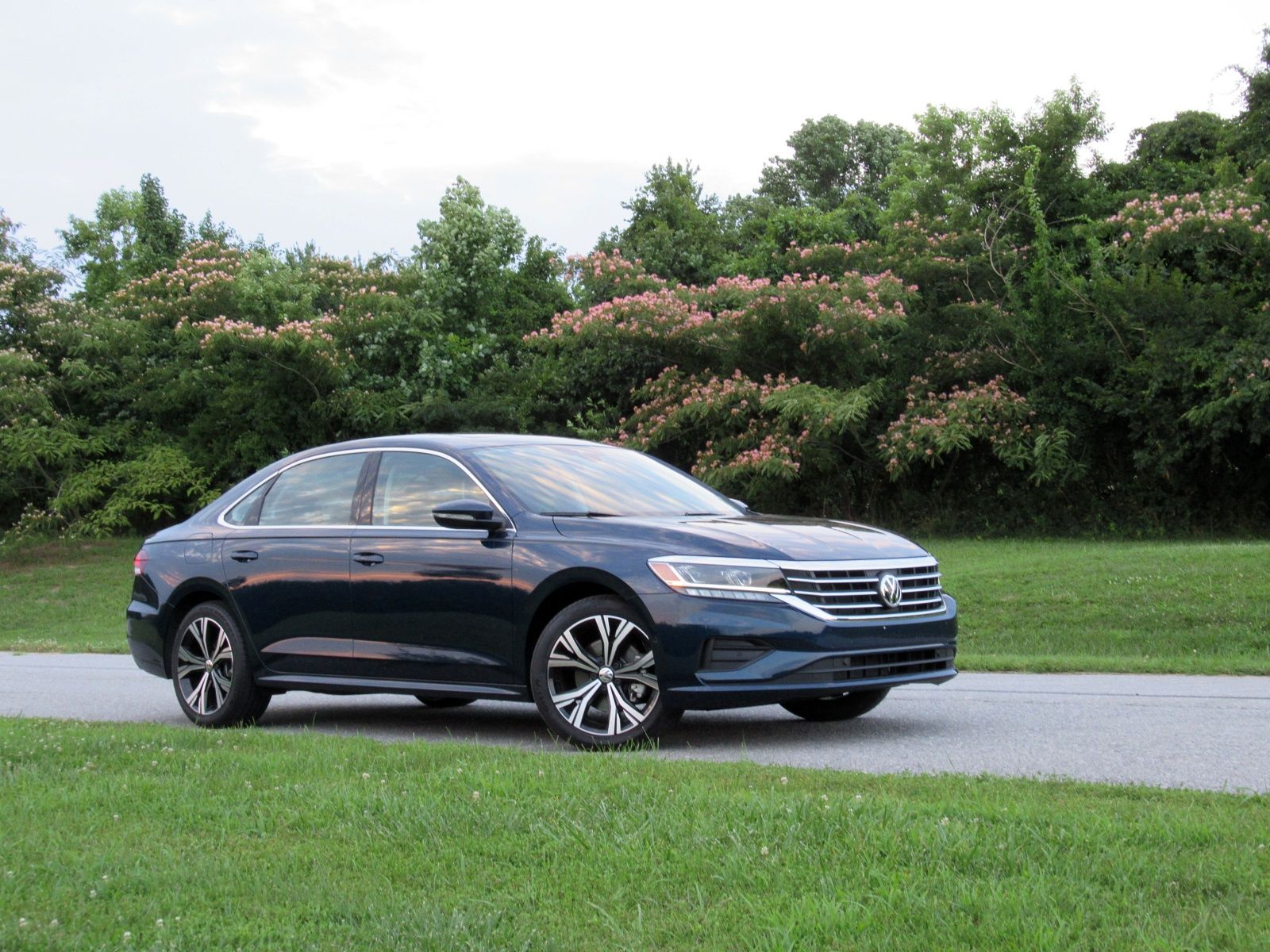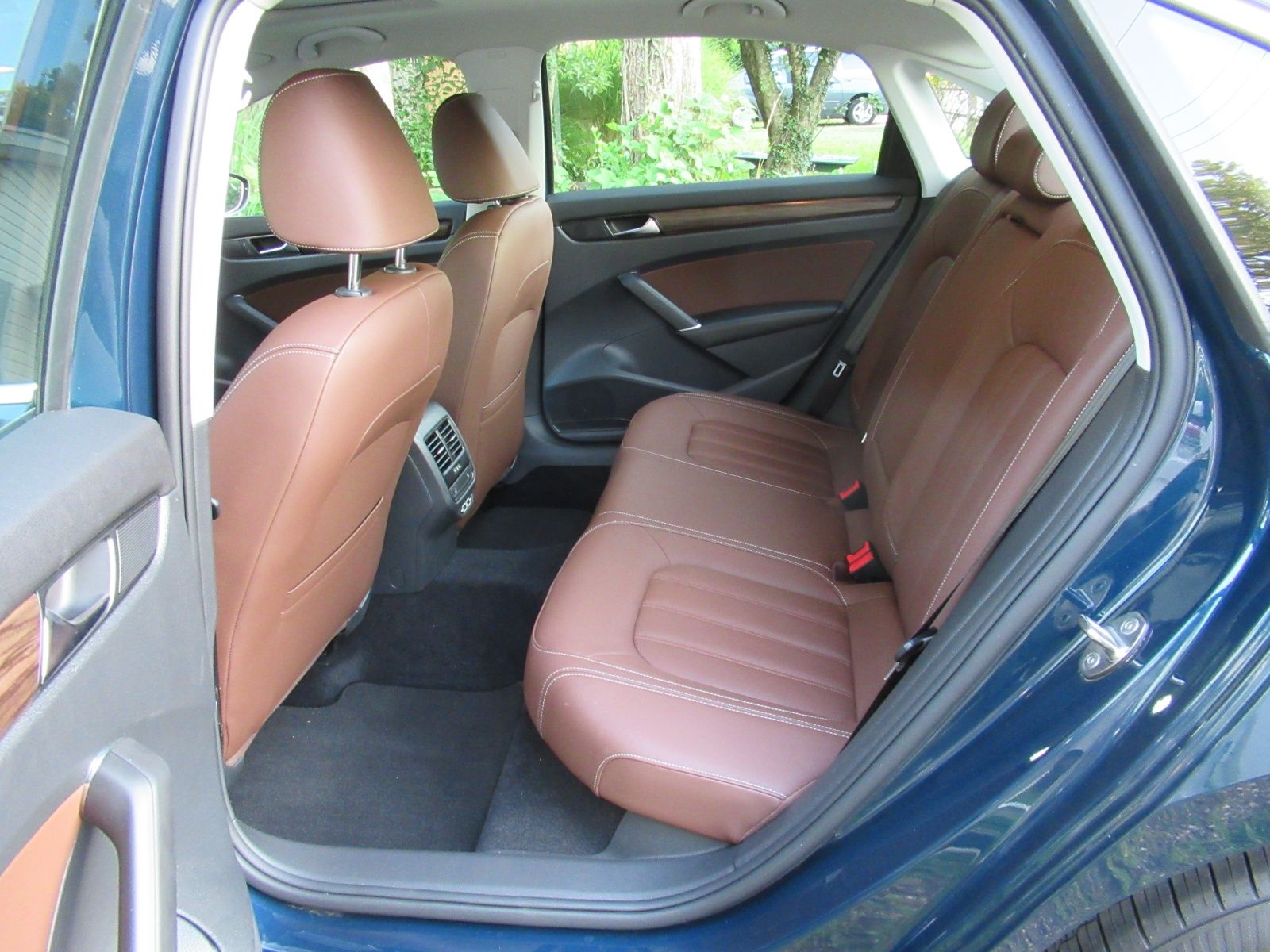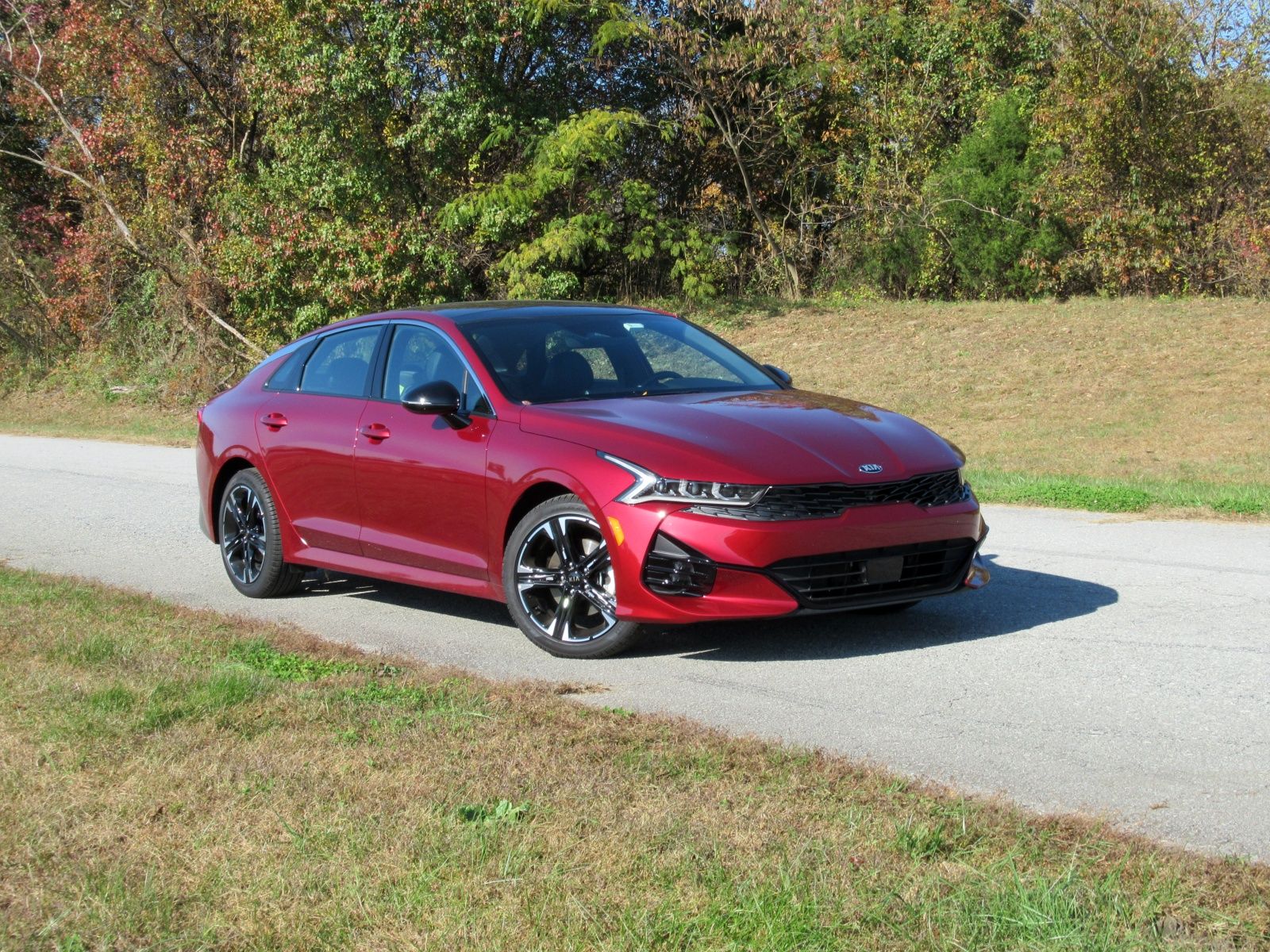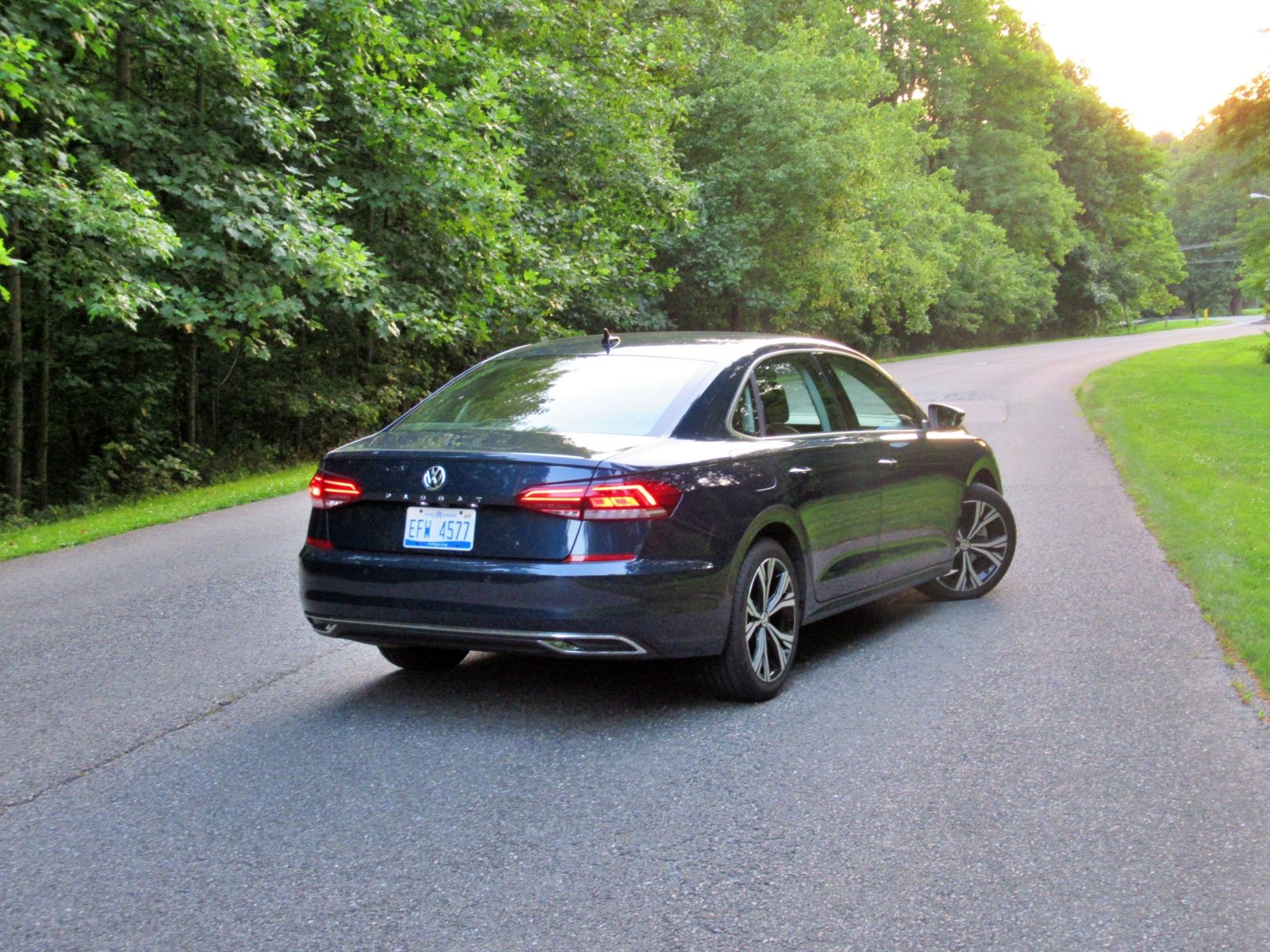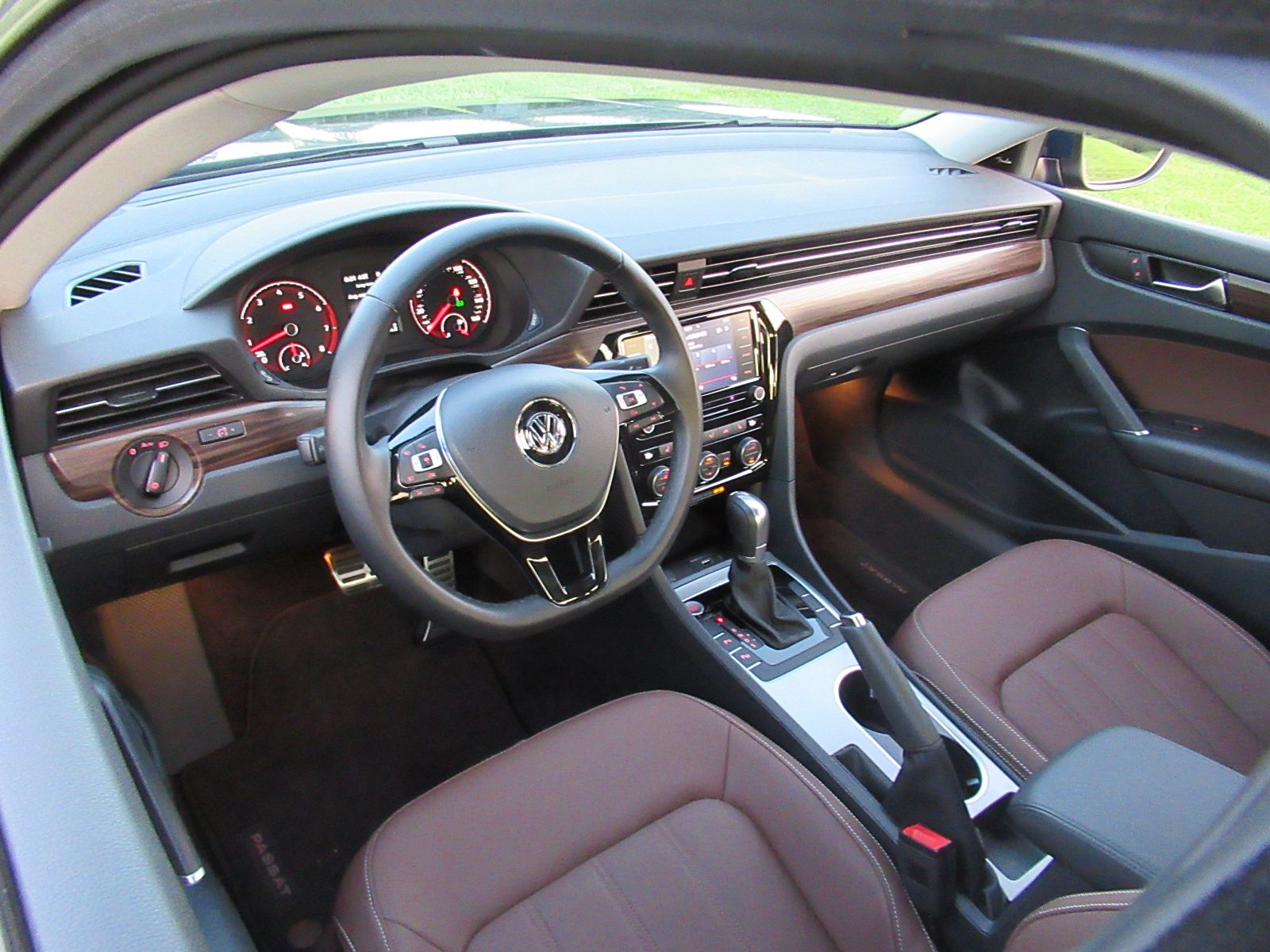Sometimes, a car needs a full redesign to address a fundamental flaw. Perhaps it’s too small, or too big. Maybe its styling is stale or unappealing. Or perhaps its platform can’t support modern needs.
The 2020 Passat has revised interior and exterior styling, more standard features, and an updated engine. That’s a cheaper set of changes than a full redesign, and Volkswagen is passing those savings on to the customer. Is that enough to excuse the Passat’s old bones? Or are you better off opting for a fresher competitor? Here’s what we learned from our time behind the wheel.
2020 Volkswagen Passat - Driven
- Make: Array
- Model: 2020 Volkswagen Passat - Driven
- [do not use] Vehicle Model: Array
2020 VOLKSWAGEN PASSAT – DESIGN
Twice since its 2010 debut, VW has reshaped large amounts of the Passat’s sheetmetal — only to put on a new design that looks remarkably like the old one.
The Passat sports an upright profile, big windows, and clean, simple lines. It’s a quietly classy approach that’s the opposite of flashy, trendy competitors with swooping lines, sharp creases, and aggressive grilles. On the other hand, only a car expert will know whether your Volkswagen is brand-new or nine years old. To some folks, it’s just stodgy.
The interior is a mixed bag. The updated Passat incorporates the slick dashboard-spanning vent design that VW debuted in its flagship Arteon. But right below it is a slab of old-school fake wood and a diminutive 6.3-inch touchscreen infotainment system. The latter is a casualty of the Passat’s old bones, which reportedly include a wiring harness that’s unable to support more advanced graphics on the dashboard or gauge cluster. There’s also just one front-seat USB port, though all but the base trim level adds two more for the rear seat that can serve the front passengers with a long enough cable. In another demerit, Volkswagen made the gauges red as part of the design update. It’s a sporty cue that’s out of place in a decidedly non-sporty sedan.
The current Passat has never won acclaim for its interior materials, but it’s not objectionable given the price. What’s more, the 2021 model will add luxury touches to the base trim level that help the vehicle feel upscale: leather trim on the steering wheel, gear selector, and handbrake. The exterior brought 17-inch alloy wheels to the base model starting with 2020, and all but the base trim level include either leatherette or genuine leather upholstery for 2020. The 2021 Passat lineup no longer offers genuine leather upholstery like our 2020 test vehicle, but VW’s leatherette is a passable substitute.
2020 Volkswagen Passat exterior dimensions
|
Wheelbase (in/mm) |
110.4/2804 |
|
|---|---|---|
|
Front Track (in/mm) |
62.1/1578 |
|
|
Rear Track (in/mm) |
61.1/1553 |
|
|
Length (in/mm) |
193.6/4917 |
|
|
Width (in/mm) |
72.6/1843 |
|
|
Height (in/mm) |
58.7/1491 |
2020 VOLKSWAGEN PASSAT - INTERIOR SPACE AND COMFORT
The current Passat is the result of Volkswagen’s first all-out effort to appeal to American buyers. Despite critical acclaim, we’d stopped buying the pricey but premium-feeling version of the Passat that’s sold in Europe and other parts of the world. So this time around, VW focused on all-American qualities of spaciousness and affordability, rather than artfully polished handling composure and a meticulously finished interior.
If you’re a tall parent of a young child, you’ll love how easily this VW swallows a rear-facing car seat without forcing the front seats far forward. And adults and children alike will appreciate that the Passat has bigger windows than most modern sedans. One continued issue is that the Passat has an unusually tall floor hump, so some competitors will outperform it if you’re carrying five people inside. But for four, you won’t find more space in this segment.
Up front, the accommodations are less special. There’s plenty of space in the wide-feeling Passat, and the seats are also wide and decently comfortable. But roomy front seating is the norm for a midsize sedan; it’s only in the back where the Passat is a standout. Similarly, at 15.9 cubic feet, the Passat has a roomy trunk but is only on par with many competitors.
2020 Volkswagen Passat interior dimensions
|
Headroom (in/mm) |
38.3/972 |
37.8/960 |
|---|---|---|
|
Shoulder room (in/mm) |
56.9/1445 |
57.0/1448 |
|
Legroom (in/mm) |
42.4/1077 |
39.1/992 |
|
Volume |
53.5 cu ft |
48.8 cu ft |
2020 VOLKSWAGEN PASSAT - DRIVING EXPERIENCE
The 2020 Passat brings an updated version of the engine that it’s used since 2018: a 2.0-liter turbocharged four-cylinder. It makes a middling 174 horsepower but a heartier 206 lb-ft of torque — the latter is a 22-lb-ft boost over the 2019 model.
You feel that extra kick when accelerating off the line, almost to an extreme; it’s sometimes difficult to get the Passat moving gently. Still, if you like speed, you’ll appreciate this muscle, especially since the Passat no longer offers an optional V-6 engine.
2020 Volkswagen Passat specifications
|
Engine |
2.0L inline four cylinder, 16V,turbocharged/intercooled, TSI |
|---|---|
|
Horsepower (SAE) @ rpm |
174 @ 5000 |
|
Maximum Torque, lb-ft @ rpm |
206 @ 3000 |
|
City/highway/combined |
23/34/27 |
Especially at lower speeds, the steering feels loose and sloppy, without the confidence-inspiring precision and firmness you’d find in many other midsize sedans. The brakes are an on-off switch, overly sensitive after a long pedal travel. You’ll find suitable capability when you do explore the car’s limits, but the Passat gives you little reason to try. The ride is smooth and quiet, and that’s where the vehicle’s priorities lie.
The 2020 Passat’s EPA ratings are mediocre for a midsize sedan: 23 mpg in the city, 34 mpg on the highway, and 27 mpg combined. That’s closer to the more powerful upper-level engines of most competitors, while their base models can top 30 mpg combined. Our test vehicle did on average about 31 mpg, at least, and its highway mileage was in the upper 30s. And the 2021 Passat has tweaks that bump its ratings to 24 mpg city, 36 mpg highway, and 28 mpg combined.
2020 VOLKSWAGEN PASSAT - PRICING
The 2020 Passat starts at $22,995 (plus a $920 destination charge) with standard features that include 17-inch alloy wheels, a touchscreen infotainment system with Android Auto and Apple CarPlay, a six-speaker sound system, and safety features that include automatic emergency braking and blind-spot monitoring.
That’s a great deal for the midsize sedan class, and slow Passat sales also make it easy to haggle that price down further. The SE model is also attractively priced at $25,845 plus destination. It adds heated leatherette-upholstered seats with power driver adjustments, a leather-wrapped steering wheel, push-button starting, the two rear-seat USB ports (for a total of three in the vehicle), automatic climate control, rain-sensing windshield wipers, adaptive cruise control, and lane-keep assistance.
Upper-level Passats become more questionable. The $28,645 R-Line has a sport-themed body kit, larger 19-inch wheels, and paddle shifters, and a sunroof is standard rather than a $995 option on the SE.
That’s a lot of extra coin for mostly cosmetic updates — especially on a car that’s not sporty to look at or to drive. Then there’s the top-of-the-line SEL like our test vehicle, which is a steep $31,095.
Compared with the SE, you get 18-inch wheels instead of 17s, genuine leather instead of leatherette, driver-seat memory settings, a power-adjustable passenger seat, a hands-free trunk, a Fender sound system, automatic high beams, parking sensors, and a self-parking feature. That’s not a bad amount of stuff, but the Passat is also conspicuous for what it doesn’t have at more than $30,000: a decent-sized infotainment screen, let alone a plus-sized one like on several competitors; ventilated seats; a panoramic sunroof; an electronic parking brake; or any true standout qualities besides its styling (if you like it) and its huge back seat (if you need it).
The 2021 Passat discontinues the top SEL model and shifts some of its content into lower trim levels. The S jumps by $1,000 to $23,995 plus destination but adds adaptive cruise control and leather trim on its steering wheel, gear selector, and handbrake. The SE rises to $26,995 with the sunroof as standard equipment, and it also adds the SEL’s 18-inch wheels. The R-Line now costs $29,995 as the new top-of-the-line model and features the SEL’s Fender sound system and automatic high beams; still, we’d focus our attention on the much more affordable S and SE.
2020 VOLKSWAGEN PASSAT VS. THE COMPETITION
The 2020 Passat undercuts its closest competitors by at least $1,000, and often more.
Perhaps you want a family car with a more stain-resistant surface, or you’re just not a fan of cloth. Most competitors send you past $30,000 to get leather upholstery without the option for a lower-cost leatherette, including the Honda Accord, Toyota Camry, Nissan Altima, and even the budget-brand Hyundai Sonata. However, the Kia K5 and Mazda6 also have relatively affordable leatherette-trimmed models that closely rival the Passat SE.
Setting aside the Passat’s price advantage, it has a bigger backseat (at least for four passengers) and a more conservative design than any of today’s other midsize sedans. It has above-average acceleration (not counting competitors’ pricier optional engine upgrades) and below-average fuel economy. And it has the smallest infotainment screen in its class. Focusing more specifically on the K5 and Mazda6 — since they provide the most similar combination of high-end features at affordable prices — both of these competitors look and feel more luxurious and modern than the Passat. Of the two, the K5 has the superior infotainment and the bigger backseat, while the Mazda has higher-grade materials and sportier handling.
2020 VOLKSWAGEN PASSAT IN A NUTSHELL
The updated Volkswagen Passat is a budget-priced family sedan that doesn’t scream cheapness. It’s stately and spacious, and it’s peppy and quiet. It’s not in the running to be a class leader, but these old bones still have life in them — at the right price.

